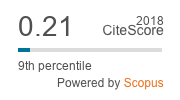Padronização Da Versão Em Português Da Escala De Autoconceito De Janis E Field Revisada Por Eagly
Résumé
Dados psicométricos relativos à escala de autoconceito de Janis e Field (1959), em sua versão ampliada por Eagly (1967) e traduzida para o português por Crano, Crano e Biaggio (1983) foram obtidos com uma amostra de 658 estudantes universitários da cidade do Riode Janeiro. As análises estatísticas levadas a efeito confirmaram a adequação da escala para o uso no Brasil, tal como anteriormente demonstrado por Crano, Crano e Biaggio (1983). O artigo apresenta normas brasileiras para a conversão dos escores brutos em escores T de McCall.
Téléchargements
Références
LABENE, W. В. & GREENE, В. I. (1969). Educational Implications of Self-Concept Theory. California: Goodyear. RODRIGUES, A. (1985). Reducing dissonance after a decision with and without ego enhancement. Trabalho apresentado na 93rd. Annual Convention of the American Psychological Association. Los Angeles. ROTTER, J. B. (1966). Generalized expectancies for internal versus external control of reinforcement. Psychological Monographs, n? 80. STEELE, С M. & LIU, T. J. (1981). Making the dissonant act unreflective of self: Dissonance avoidance and expectancy of a value-affirming response. Personality and Social Psychology Bulletin, 7, 393-403. STEELE, С M. & LIU, T.J. (1 983). Dissonance processes as self-affirmation.Journal of Personality and Social Psychology, 45, 5-19.



